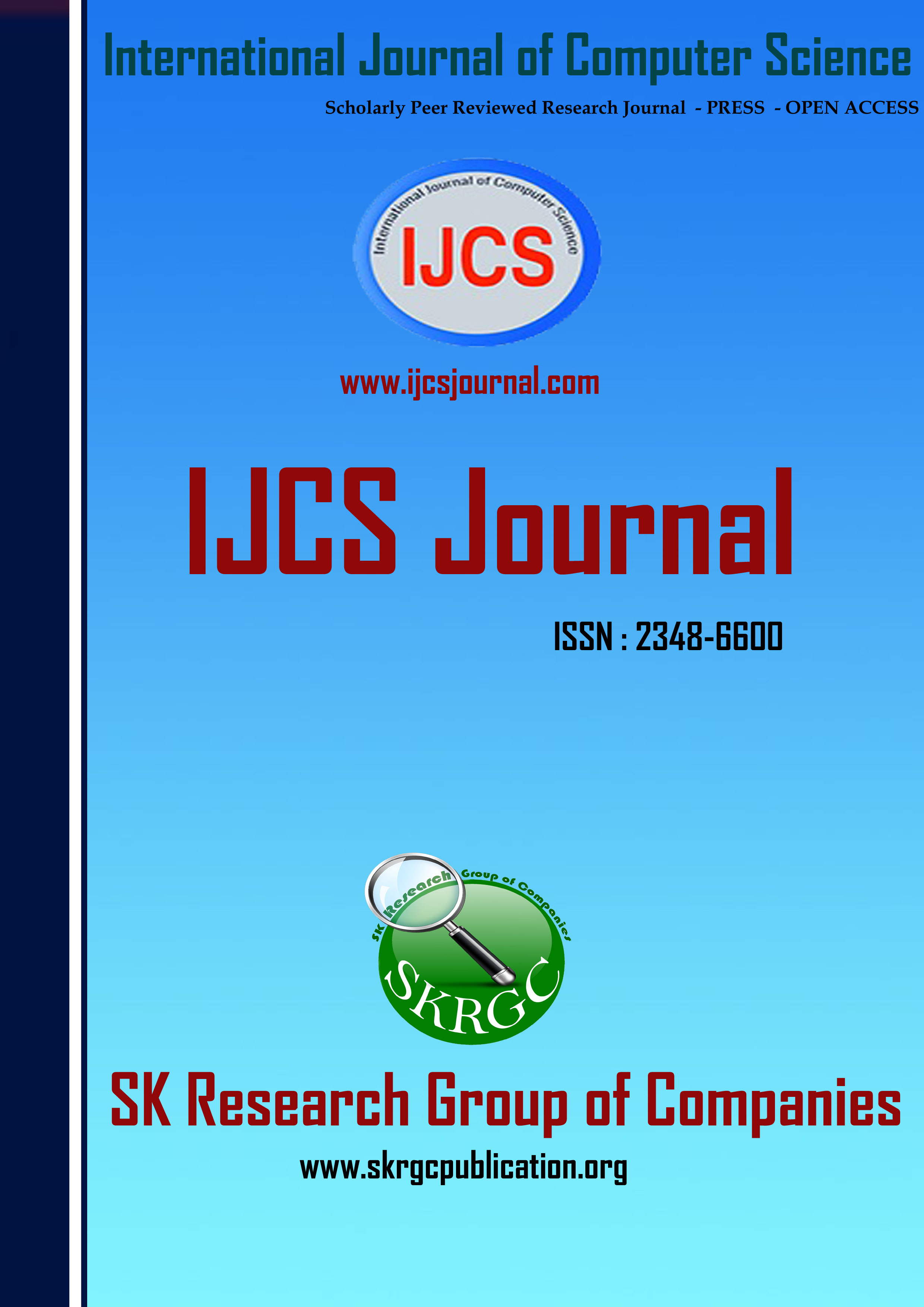An Events Detection and Analysis Using Block Matching With Linguistic Technique
International Journal of Computer Science (IJCS) Published by SK Research Group of Companies (SKRGC)
Download this PDF format
Abstract
With the staggering volume of online news accessible today, there is an expanding requirement for programmed systems to examine and show news to the client on an important and productive way. Past look into concentrated just on arranging news stories by their themes into a level progression. A think seeing a news point as a level accumulation of stories is excessively prohibitive and wasteful for a client to comprehend the theme rapidly. An emergency event can happen at any time. So the latent user may not analyze the event and release the news through web source. This may happen only because of proper analyze of the particular event. Since the existing system does not provide the exact news to publish through the website, the thesis proposed a block matching with linguistic technique to analyze and release the particular news event. This may cause the web resources which is based on the different event is developed in order to let the people know of an emergency event clearly and help the social group or government to process the emergency events effectively. The underlying condition of the idle state can be utilized to pronounce the underlying status of the crisis occasion. The trial result demonstrates that dissect will be utilized to settle on the right choice for the client.
References
[1] Y. Jo, C. Lagoze, C. Lee Giles. Detecting research topics via the correlation between graphs and texts. In Proceedings of the 13th ACM SIGKDD international conference on Knowledge discovery and data mining, pp. 370-379, 2007.
[2] R. Nallapati, A. Feng, F. Peng, and J. Allan. Event threading within news topics. In Proceedings of the thirteenth ACM international conference on Information and knowledge management, pp. 446-453, 2004.
[3] G. Salton and C. Buckley. Term-weighting approaches in automatic text retrieval. Information Processing & Management, 24(5):513-523, 1988.
[4] X. Jin, S. Spangler, R. Ma, and J. Han. Topic Initiator Detection on the World Wide Web. In Proceedings of the 19th international conference on World Wide Web, pp. 481-490, 2010.
[5] X. Yin, J. Han, and Philip S. Yu. Truth Discovery with Multiple Conflicting Information Providers on the Web. IEEE transaction on knowledge and data engineering, 20(6):796-808, 2008.
[6] E. Keogh, K. Chakrabarti, M. Pazzini, and S. Mehrotra. Dimensionality reduction for fast similarity search in large time series databases. Journal of Knowledge and information systems, 3(3), 2000.
[7] J. Allan, G. Carbonell, G. Doddington, J. Yamron, and Y.Yang. Topic Detection and Tracking Pilot Study Final Report. In Proceedings of the Broadcast News Transcription and Understanding Workshop, 1998.
[8] J. Allan. Topic Detection and Tracking: Event-Based Information Organization. Norwell, MA: Kluwer, 2000.
[9] Q. Mei and C. Zhai. Discovering evolutionary theme patterns from text: An exploration of temporal text mining. In Proceedings of the eleventh ACM SIGKDD international conference on Knowledge discovery in data mining, pp.198-207, 2005.
[10] F. Jess, M. Trina, T. Jarrod, et al. Riskr: A lowtechnological Web2.0 disaster service to monitor and share information. In the Proceedings of 15th International Conference on Network-Based Information Systems, pp. 1-8, 2012.
[11] J. Makkonen. Investigation on event evolution in TDT. In Proceedings of the 2003 Conference of the North American Chapter of the Association for Computational Linguistics on Human Language, PP.43-48, 2003.
[12] C. Yang, X. Shi, and C. Wei. Discovering Event Evolution Graphs from News Corpora. IEEE Trans. on Systems, Man and Cybernetics—Part A: 39(4):850-863, 2009.
[13] J. Abonyi, B. Feil, S. Nemeth, and P. Arva. Modified Gath–Geva clustering for fuzzing segmentation of multivariate timeseries. Fuzzy Sets and Systems, Data Mining, Special Issue 149:39-56, 2005.
[14] X. Wu, Y. Lu, Q. Peng, and C. Ngo. Mining Event Structures from Web Videos. IEEE Multimedia, 18(1):38-51, 2011.
[15] Q. He, K. Chang, E. Lim and A. Banerjee. Keep It Simple with Time: A Reexamination of Probabilistic Topic Detection Models. IEEE Transactions on Pattern Analysis and Machine Intelligence, 32(10):1795-1808, 2010.
[16] C. Sung and T. Kim Collaborative Modeling Process for Development of Domain-Specific Discrete Event Simulation Systems. IEEE Transactions on Systems, Man, and Cybernetics, Part C: Applications and Reviews, 42(4):532-546, 2012.
[17] C. Wei and Y. Chang. Discovering event evolution patterns from document sequences. IEEE Transactions on Systems, Man and Cybernetics, Part A, 37(2):273–283, 2007.
[18] C. Yang and X. Shi. Discovering event evolution graphs from newswires. In Proceedings of the 15th international conference on World Wide Web, pp. 945-946, 2006.
Keywords
Topic detection, latent user, block matching with linguistic technique

